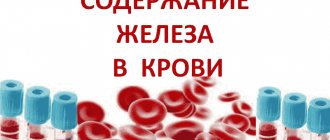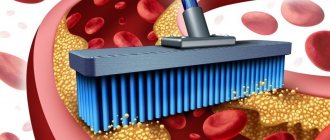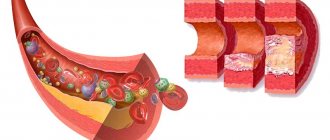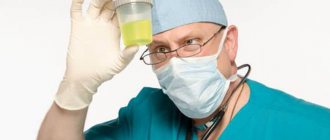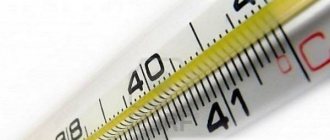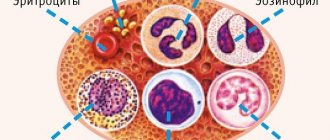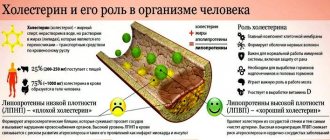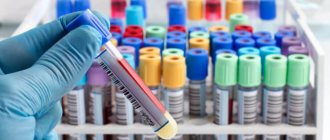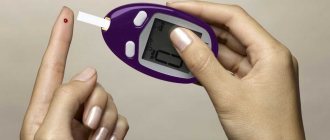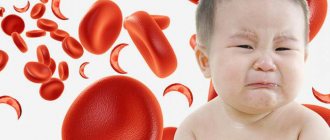There is a common myth that cholesterol is a very harmful substance that causes heart disease and stroke. Until recently, everyone thought so, but research in recent decades has revealed new information that radically changes the view of this compound.
All cholesterol is conventionally divided into 2 categories, the so-called “good” and “bad” , and the first of them does not harm at all, but protects our body from the development of atherosclerosis and other pathologies. Below we will look in detail at how to increase good cholesterol and lower bad cholesterol.
What can cause cholesterol to rise?
In 80% of cases, the accumulation of excess cholesterol is caused by poor diet and lifestyle.
- Abuse of alcohol, smoking. Ethyl alcohol and nicotine disrupt lipid metabolism, causing increased production of LDL by the liver. It turns out that good HDL simply does not have time to protect the blood vessels. Nicotine resins and alcohol, by themselves, without connection with cholesterol, make blood vessels brittle, permeable, impair liver function, which increases the risk of atherosclerosis.
- High blood pressure. Chronic hypertension often causes damage to the vascular walls. This can lead to the accumulation of fats, from which atherosclerotic plaques subsequently form. Lipid imbalances can also cause hypertension. Constricted blood vessels increase the load on the heart, forcing it to work harder.
- Poor nutrition. The predominance of fatty foods, semi-finished products, spicy, pickled, smoked foods disrupts lipid metabolism. Fats do not have time to be processed and are stored “in reserve.” If you become overweight, cholesterol levels increase. The risk group also includes lovers of low-fat, cholesterol-free diets. Not receiving the necessary fats from the outside, the liver begins to produce more of them than necessary to replenish the missing elements.
- Unstable psycho-emotional state. During stress, cortisol is produced, which breaks down a protein that increases blood glucose levels. All this disrupts metabolism and leads to vascular inflammation.
- Chronic diseases: dysfunction of the liver, kidneys, thyroid gland, diabetes mellitus. All diseases cause lipid imbalance and inflammation of the vascular walls. With high cholesterol, the risk of atherosclerotic plaques increases.
- Medications: diuretics, steroids, oral contraceptives, beta blockers. Increased concentrations of harmful LDL are sometimes a consequence of taking these drugs. No specific treatment is required. Lipid levels return to normal 3-4 weeks after stopping medication.
In 20% of cases, hypercholesterolemia appears due to genetic abnormalities. The liver produces excessive amounts of this substance or does not remove LDL from the blood. Signs of hereditary hypercholesterolemia usually appear after 18-20 years of age.
In women, cholesterol increases during menopause, when estrogen production stops. It is this hormone that prevents an imbalance in lipoprotein levels before menopause. However, if the body is healthy, the metabolism will normalize as soon as the hormonal levels stabilize.
Men initially contain very little estrogen. Therefore, their risk of atherosclerosis and cardiovascular diseases is higher. Men are advised to control their cholesterol levels starting at age 30, when the activity of metabolic processes decreases.
Basic Methods for Lowering Cholesterol Without Drugs
Proper nutrition
First, you need to almost completely change your diet. Fiber is one of the best fighters against high cholesterol in the blood. It is found in all vegetables, cereals, and fruits. True, its content in different products differs, and therefore it is necessary to choose those in which its quantity is greater.
Regular physical activity
Secondly, it is recommended to play sports, even if the patient is not overweight. Physical activity helps to activate the internal forces of the body, and also trains blood vessels and helps reduce cholesterol levels. During training, the diameter of the vessels either decreases or increases, and they themselves become elastic. Plaque particles gradually begin to dissolve, and the blood begins to purify.
Moreover, physical exercise leads to the extraction of excess subcutaneous fat and thereby improves the condition of the body as a whole. Subsequently, the body will learn to cleanse itself of excess cholesterol, and activity can be slightly reduced. It is impossible to achieve such an effect with pills and medications alone, and therefore much is in the hands of the patients themselves.
Physical activity should not be done from time to time. Regularity is the key to success in the fight against high cholesterol in the blood. You should also remember that you should start small, and here's why. In most cases, a person who needs to lower their cholesterol levels has heart disease, and this is a contraindication to many types of physical activity. A little activity under the supervision of a doctor will not only not harm, but will strengthen the heart muscle, and all this without unnecessary medications.
Finally, the load for this disease is desirable to be dynamic, not static. In other words, walking or running is much more beneficial for a person with high cholesterol than bench press.
Regular physical activity will help you not only get in shape, but also restore your psychological state.
Solving psychological problems
Thirdly, it is important to evaluate your life from the point of view of peace. Until a person understands what constantly worries him, the question of how to lower cholesterol levels without drugs will remain relevant for him. The solution to the issue here can be a frank conversation with loved ones. It is very important to express everything that you have wanted to say for a long time, even if this leads to a negative reaction from loved ones. The person himself will no longer feel the tension that has tormented him for a long time.
In some cases, a person experiences stress at work, and here it is also necessary to address issues of improving the space in which he has to work. Perhaps the situation will be improved by stickers with emoticons and photographs of loved ones placed near the workplace. As a last resort, you need to decide to change your job altogether, because no amount of money will bring pleasure at the same time as it undermines your health, and high cholesterol in the blood can be the beginning of a whole bunch of diseases.
Treatment of concomitant diseases
Fourthly, it is recommended to check your body, or rather the functioning of all internal organs. Pathologies of the pancreas can lead to increased cholesterol, and this is in the absence of all other provoking factors. The same can be said about kidney diseases such as nephroptosis or renal failure. In this case, it is impossible to fully talk about how to reduce cholesterol without medications. The main task should be to cure the main ailment, and only then can you try to reduce the level of cholesterol in the blood, and this in some cases involves taking certain medications or pills.
Normal lipid profile
The normal level of total cholesterol is 3.3-5.5 mmol/l. However, this indicator does not reflect the complete condition of blood vessels, the risk of atherosclerosis, and heart disease. The factor that determines the degree of risk of developing cardiovascular diseases is the content of its different fractions: LDL, HDL, triglycerides.
Recommended rate:
- total cholesterol – 3.3-5.5 mmol/l;
- LDL – less than 2.6 mmol/l;
- HDL – 0.70-2.00 mmol/l;
- triglycerides – 0.46-1.86 mmol/l.
A cholesterol level above 5.5 mmol/l is considered borderline and poses a health risk, since excess triglycerides and bad lipoproteins can clog blood vessels, creating obstacles to blood flow. Impaired blood circulation and oxygen starvation of tissues are the cause of acute heart attacks, strokes, and ischemia of internal organs.
What could be the reason for the decline?
Cholesterol is an essential blood element that contributes to the normal functioning of internal organs and systems. The substance enters the body along with foods and is also synthesized by the liver. High-density cholesterol rids the body of toxins and harmful substances, so this type of lipoprotein is useful and it is important to maintain it within normal limits. Low-density lipoprotein carries fats into the tissues of internal organs and systems, as a result of which they accumulate there and cause complications. If the level of bad cholesterol is higher than normal, serious diseases develop.
The level of HDL in the blood can be reduced due to the progression of the following disorders in the body:
- genetic predisposition;
- diseases of the liver and digestive organs;
- hormonal and endocrine disruptions;
- cardiovascular pathologies;
- chronic infectious inflammation;
- severe intoxication;
- tuberculosis;
- unbalanced diet with a complete absence of animal protein and fats;
- constant stress, nervous overload;
- exhaustion of the body;
- oncological pathologies;
- arthritis;
- uncontrolled use of certain groups of drugs.
Symptoms of hypercholesterolemia
High cholesterol does not have clear signs, causes dangerous cardiovascular complications: heart attack, stroke, coronary heart disease and is detected during diagnosis.
A number of nonspecific signs indicating the presence of atherosclerotic plaques causing circulatory disorders:
- Coronary insufficiency. Accompanied by shortness of breath, frequent pain in the sternum, and severe sweating. Blood pressure is unstable – it rises or falls sharply.
- Poor blood circulation in the brain. The initial stage is accompanied by frequent attacks of headaches and sudden dizziness. Over time, memory deterioration, behavior changes, forgetfulness, and unclear speech are observed.
- Damage to the blood vessels of the abdominal cavity. It manifests itself as difficult, painful digestion, bloating after eating, nausea, and rapid satiety.
- Atherosclerosis of the arteries of the legs and arms. Blocked blood flow causes tingling, burning in the toes or hands, and sometimes sudden hot flashes are felt. Over time, aching pain, lameness, swelling, numbness of skin areas, and trophic ulcers that do not heal for a long time appear.
A long-term disorder of lipid metabolism or hereditary hypercholesterolemia is manifested by external symptoms:
- Xanthomas, xanthelasmas are convex or flat spots of white, light yellow color. They form under the skin of the eyelids, fingers, and toes. They are subcutaneous accumulations of fat.
- The lipoid arch of the eye is a white or grayish-yellow layer of lipid deposits on the cornea. It most often appears after 50 years of age, but can occur in young people with familial hypercholesterolemia.
Cholesterol plaques most often affect the arteries of the chest, abdominal region, vessels of the kidneys, legs, and brain. Clinically, the disease manifests itself when the arteries become narrowed by 50% or more.
If a lipid imbalance goes undetected for a long time, this creates conditions for the development of severe cardiovascular complications and causes changes in other organs:
- Diseases of the heart, brain. Hypercholesterolemia increases the risk of heart attack and stroke by 2 times. Reducing the concentration of a dangerous substance reduces the likelihood of complications.
- Ischemia of internal organs. Atherosclerotic plaques can affect the arteries of any organ. Insufficient blood supply impairs their function. Rapid progression of the disease can lead to liver and kidney dysfunction, pulmonary edema, and chronic diseases of the digestive and intestinal tract.
- Swelling, trophic ulcers, gangrene of the legs. Insufficient blood supply to the lower extremities causes inflammation that spreads deep into the soft tissues. Without timely medical care, tissue necrosis and gangrene begin, which can lead to amputation of the limb.
- Arterial thrombosis or atherothrombosis. Damage to the vascular endothelium and decreased blood flow are the main causes of complications. In 20% of cases it leads to arterial embolism, which threatens any organ with a heart attack.
The only way to detect high cholesterol in the early stages is to do a lipid profile. It is advisable to carry out the analysis every 5 years after 20 years. If there is a hereditary predisposition or existing risk factors, every 2-3 years.
What could be the complications?
If bad cholesterol increases, and good cholesterol rapidly decreases, then first of all, such a violation negatively affects the functioning of internal organs and systems, since they do not receive enough necessary nutrients. The elasticity of blood vessels gradually decreases, which leads to their damage and macro-ruptures. The risk of developing dangerous complications such as stroke, heart attack, and death increases. In middle-aged women and men, low cholesterol is a cause of obesity and sexual dysfunction.
How to reduce high cholesterol - foods instead of statins
The diet menu should consist of products that stimulate the production of HDL, cleansing the body of waste, toxins, and LDL. These include:
- Carrots, cabbage, beets, zucchini, and greens take first place among the recommended products. They contain dietary fiber, fiber, and remove about 20% of cholesterol from the intestines, preventing it from being absorbed by the intestines. The menu should contain more vegetable dishes than others.
- Fish oil contains omega-3 fatty acids. They increase the production of high-density cholesterol particles, remove excess LDL, and restore blood vessels. Fatty varieties of sea fish contain large amounts of fish oil.
- Flaxseed oil, flax seeds. Contain polyunsaturated fatty acids, increase the production of high-density lipoproteins. Every day it is recommended to consume 10-30 g of oil or 2 tbsp. l. Flaxseed.
- Egg whites, dietary meat: chicken, turkey, rabbit. Maintains a balance of fats, proteins, carbohydrates. Chicken protein does not contain cholesterol and improves metabolism.
- Whole grain porridge: buckwheat, corn, oatmeal, pearl barley, millet. Contains magnesium, fiber, lignin, beta-glucan. They reduce high cholesterol and sugar, improve blood vessels, and cleanse the liver of toxins.
- Walnuts, almonds, pistachios (roasted without oil, unsalted) are rich in beta-sitosterol. It is recommended to consume 20-30 g of nuts daily, no more. Excess can lead to a decrease in the concentration of vitamin E and beta-carotene absorbed by the intestines. Nuts can be added to porridge, cottage cheese, and fruit salads.
- Berries: raspberries, blueberries, cherries, cranberries contain a lot of manganese, lower cholesterol, increase the elasticity of blood vessels. Fresh fruits are the most useful, but they retain beneficial microelements even after freezing.
- Citrus fruits are rich in vitamin C. If you consume 100-200 g of this element daily, your cholesterol level will decrease by 5% after 2 weeks.
- Mushrooms contain fiber, protein, and a statin that blocks the synthesis of low-density particles. However, they are considered a difficult food to digest, so they are recommended to be consumed in moderation.
- Beans and artichokes “collect” excess cholesterol. It is enough to eat 200 g of boiled beans daily to reduce its concentration.
- Soy is a good alternative to meat products. Reduces LDL levels, increases HDL. However, it is not advisable to use it more than 3-4 times a week. Soy protein contains isoflavones, which, like excess estrogen, increase the risk of breast cancer.
If lipid metabolism is disrupted, it is important to eat properly and follow a routine. To maintain digestion and general tone, it is recommended to eat 5-6 times a day in small portions. It is necessary to completely eliminate trans fats from the menu. They are contained in margarine, spreads, and confectionery products made on their basis.
Cooking, baking without crust, and stewing retain a maximum of useful macro- and microelements. Frying, pickling, canned vegetables, mushrooms lose 70% of their beneficial properties, contain a large amount of carcinogens, spices, vinegar, so it is undesirable to use them if you have high cholesterol or heart disease.
Normal cholesterol levels by age
The concentration of cholesterol in the human bloodstream varies from 3.6 mmol per liter to 7.8 mmol per liter. It is generally accepted that any content greater than 6 mmol per liter will be high and will significantly increase the likelihood of the formation of atherosclerotic disease.
One of the most common classifications of cholesterol levels is as follows:
- Preferably less than 200 mg per dl;
- The upper limit is 200 - 239 mg per dl;
- Elevated - 240 mg per dl or more;
- Optimal content: less than 5 mmol per l;
- Slightly elevated cholesterol levels: in the range of 5 to 6.4 mmol per liter;
- Moderately high cholesterol concentration: from 6.5 to 7.8 mmol per l;
- Severely increased content: more than 7.8 mmol per l.
A person needs approximately 5 g of cholesterol consumed throughout the day. Reduced readings of this substance indicate that there are diseases of certain systems in the body or there is a predisposition.
If cholesterol increases sharply, this may indicate a malfunction of the liver, the presence of diseases in the blood vessels and heart.
Read about the blood indicator D-Dimer here.
In men
Normal total cholesterol levels in men are the same as in women. The norm of low-density lipoproteins in males varies: from 2.25 to 4.82 mmol per liter. High-density lipoproteins in the bloodstream in men are normally from 0.7 to 1.7 mmol per liter.
The norm of cholesterol in men by age is as follows:
- at the age of 30 years from 3.56 to 6.55;
- at the age of 40 years from 3.76 to 6.98;
- at the age of 50 years from 4.09 to 7.17;
- at the age of 60 years from 4.06 to 7.19.
Among women
High levels of cholesterol in the bloodstream in women are dangerous for health problems and acceleration of the aging process, which can be reflected in external manifestations.
The normal total cholesterol concentration in females ranges from 3.6-5.2 mmol per liter, moderately high from 5.2 to 6.19 mmol per liter, significantly high - more than 6.19 mmol per liter.
Low-density lipoprotein cholesterol: normal is 3.5 mmol per l, high is more than 4.0 mmol per l.
High-density lipoprotein cholesterol: normally 0.9-1.9 mmol per liter, with a content less than 0.78 the risk of atherosclerosis increases threefold.
By age, women have the following division:
- at the age of 30 years from 3.32 to 5.785;
- at the age of 40 years from 3.81 to 6.14;
- at the age of 50 years from 3.94 to 6.86;
- at the age of 60 years from 4.45 to 7.77.
Folk remedies
Traditional medicine is a good addition to the diet. However, before using them, it is advisable to consult a doctor. This will help avoid allergic reactions and side effects.
The following recipes are considered the most effective:
- Lemon with garlic. 1-2 unpeeled lemons, 1 large garlic head are passed through a meat grinder. Pour in 0.5 liters of water at room temperature. Insist for 3 days. Take 50 ml three times a day. Duration of treatment is 3-4 weeks. The drug is contraindicated for peptic ulcers, gastritis, pancreatitis.
- Linden flowers. Dry inflorescences are ground with a coffee grinder. Take 1 tsp with water, half an hour before meals in the morning. It is undesirable to take linden inflorescences for diseases of the central nervous system and urinary system.
- Flax seeds, dill. Mix half a glass of ingredients, add 0.5 liters of boiling water, leave for 24 hours. The infusion is taken 1 tbsp. l. three times a day before meals. If hypercholesterolemia is accompanied by nervous disorders, you can add 1 tsp to the seeds. crushed valerian root.
- Propolis tincture. 50 g of propolis are crushed, pour 0.5 liters of alcohol. They insist for 14 days. Take 7 drops before meals. The tincture can be diluted with a small amount of cold water. Duration of treatment is 3 months.
- Tibetan style garlic infusion. 100 g of chopped garlic is poured with 100 ml of alcohol and left for 7 days. The alcohol can be replaced with 200 ml of vodka, then the holding time is increased to 14 days. The tincture is taken three times a day, starting with 2 drops, each time the amount is increased by 1 drop. Gradually increase to 20, then reduce, bringing to the initial dosage. The course of treatment can be repeated after 2-3 years.
- Buckwheat flour. 100 g of flour is poured into 200 ml of warm water, brought to a boil, and boiled for 5 minutes. Take 100 g/day, possibly several times.
- Oat decoction. 1 glass of grain is poured into 1 liter of boiling water, boiled until the volume of the mass decreases to a widow. Drink half a glass three times a day, you can sweeten it with honey.
- Sprouted alfalfa seeds. Eat 1-2 tsp. in the morning, before meals. Can be added to salads and side dishes. Dry seeds are germinated independently, covered with film, washed with water 1-2 times a day.
- Treatment with juices is sufficient for 5 days/month. Freshly squeezed juices are drunk twice a day, 150 ml. Drinks made from celery, carrots, beets, cucumbers, green apples, cabbage, and oranges quickly reduce the level of dangerous substances.
- Fruits of rose hips, hawthorn. 150 g of crushed fruits are poured with 300 ml of alcohol and left for 2 weeks. Take 10 ml in the evening before meals.
There are many plants that help normalize lipid metabolism and reduce lipoprotein levels. The most accessible and effective:
- Bearberry contains many flavonoids, has a powerful anti-cholesterol effect, and strengthens the body.
- St. John's wort and ginseng are considered real natural statins. They reduce the rate of cholesterol production by the liver and bind dangerous particles that are already in the blood.
- Strawberry leaves remove excess LDL, toxins, waste, and normalize metabolic processes.
- Dandelion root improves the functioning of the cardiovascular system. Cleanses blood vessels, prevents lipoproteins from settling on vascular walls. This is a good preventative against cholesterol plaques.
- Calendula improves blood, strengthens blood vessels, and has an anti-inflammatory effect. Slows down the development of atherosclerosis, increases HDL.
- Golden mustache contains a large amount of natural steroids and flavonoids that enhance the production of beneficial lipids. It is also good to use for the prevention of atherosclerosis, increasing immunity, and normalizing metabolism.
To reduce cholesterol, use one or several herbs at once, mixing in equal proportions. 100 g of the mixture is poured into 250 ml of boiling water, left for 30-60 minutes, and drunk several times. Fresh infusion is prepared daily. The course of treatment lasts from 1.5 to 3 months.
Description
Cholesterol is a lipid, or fatty alcohol, with a high molecular weight. This component is indispensable for the healthy functioning of the body, since it ensures normal metabolism and also participates in the synthesis of vitamins and important hormones essential for the body.
Cholesterol is produced by the liver in an amount of approximately 80% of the total mass, and 20% of the substance enters the body from the outside with food. The substance is also necessary for the normal functioning of the liver, brain, and muscle activity.
In addition, if it is deficient, sex hormones cannot be produced in sufficient quantities. This substance
is found not only in blood vessels: cholesterol is present in every cell of the body, but in limited quantities: it forms clusters only in blood vessels.
If, for one reason or another, lipid metabolism begins to go abnormal, the level of cholesterol in the blood rises. In this case, the substance crystallizes and settles inside the blood vessels. The so-called low-density bad cholesterol is especially susceptible to this process.
Medications
If nutrition does not help normalize high cholesterol, its levels are stable or exceed 5.5 mmol/l, lipid-lowering medications may be prescribed. For abnormally high cholesterol levels and hereditary hypercholesterolemia, drug treatment is prescribed along with a diet.
There are several groups of drugs:
- Statins: Lovastatin, Rosuvastatin, Simvastatin, Atorvastatin. Essential medications for treating high cholesterol. They have multiple contraindications and side effects. When taking them, monitoring the patient's condition is required. The dosage is selected individually.
- Fibrates: Fenofibrate, Ciprofibrate, Bezafibrate, Clofibrate. Reduce the concentration of organic fats. Designed to normalize lipid metabolism. Often used together with statins.
- Nicotinic acid: Niacin. Normalizes lipoprotein levels, increases HDL, reduces LDL, slows down the development of atherosclerosis. The effect is noticeable 5-7 days after the start of treatment.
- Bile acid sequestrants: Colestipol, Cholestyramine. Not effective for excessive triglyceride concentrations. Often prescribed as auxiliary drugs in complex therapy.
- Medicines that inhibit cholesterol absorption: Ezetimibe, Ezetrol. A new class of lipid-lowering drugs. Prevents the absorption of cholesterol by the intestines, reducing its entry into the liver. A greater effect is observed when using drugs with statins.
3-5 weeks after the start of treatment, the patient is prescribed a lipid profile to check the effectiveness of treatment. If the patient is not susceptible to a particular drug, the doctor prescribes several medications or increases the dosage of a previously prescribed drug.
What other foods can raise cholesterol?
In addition to foods containing animal fat, cholesterol can be increased by drinks and foods that do not contain this fatty alcohol, but have a negative effect on fat metabolism. These products include:
- Confectionery, ice cream, pastries, cakes, candies, buns, pies and pies: in addition to the fact that sweets often contain products that can increase cholesterol (butter, milk, cream), these dishes are high in calories. Excessive energy intake from food threatens not only excess weight, but also “disruptions” of metabolism. These factors can increase cholesterol and provoke the deposition of atherosclerotic plaques on the walls of blood vessels. Therefore, doctors are most often forced to prohibit foods rich in easily digestible carbohydrates for patients with atherosclerosis.
- Sugary carbonated drinks are another product rich in simple carbohydrates and glucose.
- Alcoholic drinks: in addition to the fact that strong alcohol is high in calories and has so-called “empty” energy, this product can directly damage blood vessels and provoke the deposition of cholesterol plaques. Acceptable alcohol for atherosclerosis is a glass of red or white dry wine.
- Coffee: Although coffee is not an animal product, this drink can also raise cholesterol levels. The fact is that this product contains a curious substance called cafestol, which acts at the level of intestinal cells and increases the absorption of cholesterol into the bloodstream. Thus, drinking 4-5 cups of black coffee daily can increase your levels of harmful HDL by 6-8%. Coffee with milk contains even more cholesterol, since milk itself is a source of fatty alcohol.
To summarize, it is worth noting that nutrition for atherosclerosis should be balanced and as varied as possible. You should not give up any meat or dairy products for fear of animal fat. Protein foods should always be present on your table, as well as all kinds of cereals, vegetables and fruits. By limiting foods from the “red” list as much as possible, you can achieve normalization of fat metabolism. Cholesterol within target values is the main task that modern medicine must solve to combat atherosclerosis.
Cholesterol and pregnancy
In the 2nd and 3rd trimester of pregnancy, the values of the lipid profile change, the indicators increase, which is the norm. The liver produces double the amount of cholesterol as it is necessary for the normal development of the fetus.
During pregnancy, high cholesterol is normal. However, if the level exceeds 12 mmol/l, nutritional correction is required, followed by a repeat lipid profile. If there is a hereditary predisposition to hypercholesterolemia, it is advisable to take a test for total cholesterol every three months.
If the diet is not effective, your doctor may prescribe lipid-lowering medications, provided that the benefits of treatment outweigh the potential harm. Taking medications without a doctor's prescription or using traditional recipes is strictly prohibited. All medications have side effects that can negatively affect the development of the child.
Herbal treatment
The easiest way to lower cholesterol is to use herbal remedies so as not to resort to medications. Various herbs and fruits that have long been used in traditional medicine for atherosclerotic disease will help cope with high cholesterol.
Hawthorn
For treatment with folk remedies, it is recommended to first pay attention to hawthorn. You can use both the fruits and flowers of hawthorn, which have similar properties.
Hawthorn flowers for use as a treatment must be collected in dry weather, when the bushes are just beginning to bloom. You can dry them either in an electric dryer or in a ventilated area on a sheet of paper. If hawthorn fruits are used, they must be ripe. They can also be dried in the dryer at 60 degrees. After drying, it is necessary to remove the stalks and discard those fruits that are unsuitable.
To prepare the infusion, you need to take a tablespoon of flowers or two tablespoons of finely chopped hawthorn fruits and pour one and a half glasses of hot water. The product must be infused until the liquid has cooled, after which it is taken three times a day. It is best to drink hawthorn tincture half an hour before meals.
Black currant
Black currants are a great way to reduce high cholesterol. Both the leaves of the plant and its fruits can be used as treatment. It is necessary to harvest the leaves during flowering, and the fruits are collected exclusively when they are ripe, in good weather.
ADVICE! Blackcurrant berries are cleaned of impurities, washed and dried in a ventilated room or in an electric dryer at a temperature of 40 degrees.
To prepare the infusion, add 2 tablespoons of berries to one glass of water. You need to take half a glass three times a day. If the infusion is prepared from leaves, then the crushed raw material (4 tablespoons) must be poured with four glasses of water. It is recommended to drink half a glass three times a day. The prepared product can be stored in the refrigerator, but reheated before use.
Sweet clover
We also recommend reading:
How to lower cholesterol
Another effective folk remedy for hypercholesterolemia is the medicinal sweet clover. The herb has long been known to populists; it is recommended for patients with atherosclerosis and those people who have high cholesterol in the blood.
For medicinal purposes, sweet clover herb must be collected at the very beginning of flowering. The upper part of the stem and side shoots are cut off with a knife, dried either in the open air or hung in the attic in a well-ventilated place. After this, the sweet clover grass is threshed.
The infusion for treatment is prepared as follows: two teaspoons of raw material are poured with one and a half glasses of hot water. The mixture is infused until the liquid reaches room temperature. You need to drink the drug three times a day, half an hour before meals.
Horse sorrel
You can get rid of high cholesterol using horse sorrel. The roots of this plant are used for treatment. It is best to dig up sorrel in autumn or spring. The roots must be cleared of soil, the above-ground part cut off and washed thoroughly. Horse sorrel root, cut into small pieces, is dried in an electric dryer at a temperature of 60 degrees, stirring from time to time.
To prepare the product, you need to pour a tablespoon of crushed dry raw materials with a glass of boiling water. The infusion should stand for at least 2 hours in a well-sealed container. It is recommended to use the product one tablespoon up to 5 times a day. When treating with horse sorrel, it must be remembered that it is contraindicated for people with gout and a predisposition to the formation of kidney or bladder stones.
Red rowan
Populists advise using rowan for high cholesterol levels. As a treatment, ripe rowan fruits are harvested, which effectively reduce cholesterol in the blood. The bunches must be washed, dried, and then diseased and rotten berries must be removed. After drying the rowan, it is used as an infusion. One tablespoon of fruit is poured into two glasses of hot water, waiting until the product cools down. Drink liquid three times a day, regardless of meal time.
Dill
The most common dill will help cure high cholesterol. For the treatment of hypercholesterolemia, it is necessary to use dill seeds. The plant is harvested from gardens in the fall, and it is these seeds that need to be harvested - this is what is necessary for therapy. The stems are cut, diseased and dirty umbels are removed, and the good ones are threshed.
The seeds must be cleaned of foreign impurities and dried. Then they can be used for treatment. Two tablespoons of dill seeds are poured into three glasses of boiling water and left until the liquid reaches the optimal temperature. If the medicine is bitter, you can add a small amount of honey. You need to drink the product three times a day.
Prevention
A balanced diet, an active lifestyle, giving up or limiting bad habits are good prevention of lipid metabolism failures, atherosclerosis, and heart disease.
Diet helps you lose weight. Losing 2-5 kilograms improves cholesterol control. This does not require long-term fasting or strict diets with refusal of usual food.
You can improve your usual diet in the following ways:
- Reduce consumption of animal fats and trans fats. Animal fats should make up approximately 10% of the diet, and it is advisable to completely avoid trans fats. Margarine and spreads can be replaced with olive oil and corn oil. Butter can be consumed 1-2 times/week.
- Eat more whole grains: brown rice, whole grain bread, bran, crispbread.
- Vegetables, fruits, and berries should form the basis of the daily menu. Prepare vegetable soups, stews, and salads from them. Fresh or frozen berries make delicious, healthy desserts and smoothies.
- Limit the intake of exogenous cholesterol. Most of it is contained by offal, egg yolks, pork, whole milk, cream, and homemade cheeses.
- Don't forget about nuts and seeds containing phytosterols. Their regular use helps reduce the concentration of dangerous lipids by 15%.
Do not blindly follow fashion by following new, unknown diets. Often they help get rid of extra pounds only for a short time. Diets can be dangerous because they exclude components that are important for life.
For hypercholesterolemia, it is recommended to follow a varied menu. Every day you can use:
- cereals – 100-200 g in the morning or evening;
- vegetables, fruits – 3-5 servings;
- low-fat dairy products - in the morning, after lunch, before bed;
- lean meat, poultry, fish - 200 g each:
- sweets: honey (1 tbsp), dark chocolate (1/4 bar), dried fruits, candied fruits, halva, marmalade, marshmallow (50 g).
A Mediterranean diet can help manage high cholesterol. It is based on whole grains, fruits, vegetables, red fish, olive oil. It contains a lot of fiber, antioxidants, monounsaturated fats, which are safe for high cholesterol.
It is known that obesity increases the risk of developing atherosclerosis and heart disease. Diet and regular exercise get rid of extra pounds and reduce LDL.
If a person previously led a sedentary lifestyle, physical activity is increased gradually. At first it could be walking, a ten-minute warm-up in the morning. Over time, the duration of the exercises is increased to 30 minutes. Swimming, running, cycling, yoga, and Pilates are very effective.
The prognosis for high cholesterol is favorable. Timely treatment and prevention help to avoid the occurrence of atherosclerosis and cardiovascular diseases. Of course, a lot depends on the patient’s lifestyle. Proper nutrition, physical activity, and giving up bad habits help normalize cholesterol levels in 2-3 months.
Food that heals
There are foods that lower cholesterol levels. These are mainly vegetables, fruits, herbs:
- The record holder for its healing effects is carrots. Has a beneficial effect on the liver, kidneys, and metabolism. It is enough to eat 100 g of carrots to reduce the level of bile acids.
- Tomatoes contain lycopene, a substance that lowers cholesterol and prevents the development of cancer. For healthy kidneys, it is useful to eat up to 1 kg of fresh tomatoes daily, and in winter drink 2 glasses of tomato juice.
- Garlic not only prevents the accumulation of lipids on the walls of blood vessels, but also dissolves existing plaques. Allicin, formed during its oxidation in air, removes excess cholesterol. To remove the pungent odor, minced garlic is mixed with lemon juice 1 to 1 and infused. Before going to bed, drink a teaspoon of the mixture with water.
- Pumpkin pulp effectively reduces fatty alcohol levels in blood tests. It is easily digestible, low-calorie, and has no contraindications. Pumpkin seeds containing pumpkin seed oil are a special vitamin preparation.
- Cucumbers and zucchini contain potassium. Vegetables are easily digestible and have choleretic, diuretic and laxative effects. Remove excess cholesterol, reduce weight.
- Fish. Fatty fish contains Omega 3 fatty acids, tauric acid, phosphorus, and potassium. It is better to boil or steam such fish. It is especially useful for heart diseases.
- Legumes contain soluble fiber, fiber, potassium, folic acid, amino acids, vitamins, phytosterols, omega acids. These components normalize cardiac activity, cleanse blood vessels and blood of “bad” cholesterol. Due to its high protein content, it can replace meat in the diet.
- Citrus fruits contain pectin, vitamins, and soluble fibers that remove bile acids and prevent their absorption.
- Oat bran contains a lot of dietary fiber. They have a positive effect on intestinal function, improve its microflora, remove toxins and bad cholesterol by binding to bile acids in the intestines.
- Pistachios are rich in unsaturated fatty acids, antioxidants, and fibers that are good for the heart and blood vessels. Plant substances contained in nuts interfere with the absorption of fatty acids.
- Tea contains tannin, which helps regulate fat metabolism. Green tea is more beneficial.
- Bell pepper strengthens blood vessels, removes cholesterol, and normalizes blood pressure.
- Eggplants have a lot of potassium. They are indispensable for cardiovascular diseases, regulate water-salt metabolism, normalize acid-base balance, and reduce the content of fat-like substances in the blood.
What else helps reduce cholesterol in the female body?
You should consider adding some or all of the following to your diet on a regular basis.
Psyllium Leggings
Psyllium husk comes from the seeds of the Plantata ovata plant and is full of soluble fiber. So much so that they are sometimes added to some laxative products.
Research has shown that psyllium is an effective way to lower cholesterol in people with very few side effects.
Typical dosage for adults is 1/2 to 2 teaspoons per day mixed with water.
Oatmeal
If you're worried about your cholesterol levels, a big cup of oatmeal may be the perfect way to start the day.
There is ample evidence that this fiber-rich food is beneficial for lowering cholesterol levels. The FDA even gave it "health claim" status in 1997, meaning oat flour manufacturers can advertise the health benefits of oats on packaging.
Green tea
Showing how worthy it is of its superfood status, green tea can have a significant impact on cholesterol levels by lowering LDL (bad) cholesterol without affecting HDL levels.
Red wine
Who said healthy eating has to be boring? Now's your perfect excuse to enjoy a glass of red wine with dinner—studies show that drinking a glass of red wine every day for four weeks increases good cholesterol by up to 16%.
Similar effects were not found among people taking the same amount of red grape extract, leading researchers to believe the alcohol in the drink is key.
Why is low cholesterol dangerous?
The number of deaths due to a lack of this substance is three times higher than the number of deaths due to its excess. Here are some pathologies:
- Obesity. The production of bile acids is impossible, which means the absorption and breakdown of fats and the metabolism of fat-soluble vitamins.
- Chronic digestive disorder.
- Violation of the integrity of the intestinal walls and, as a result, the release of toxins into the blood.
- Lack of nutrients in the body.
- Predisposition to diabetes (2).
- Risk of cancer.
- Cell membranes become vulnerable to free radicals.
- Hemorrhagic stroke, heart attack. Circulatory disorders, capillary fragility and hemorrhages increase, which means problems with the heart and blood vessels cannot be avoided.
- Osteoporosis. Problems with the absorption of calcium and, as a result, a violation of the composition of bone tissue.
- Depression. The frequency of suicides has increased two to three times.
- Immunity decreases. Without the production of vitamin D, the normal state of nerve cells, mineral metabolism, and insulin production are disrupted.
- Problems with reproductive function. The production of adrenal steroid hormones is hampered, incl. sex hormones.
- Amenorrhea. Women who thoughtlessly experimented with diets experience cases of premature menopause.
- Impaired thinking and memory. Possibility of developing Alzheimer's disease.
- Children have slow growth and sometimes mental retardation.
Reasons for low level:
- liver diseases,
- tuberculosis,
- acute pancreatitis,
- hyperthyroidism,
- heart failure,
- infectious diseases,
- intoxication,
- stress,
- anorexia,
- vegetarianism and unbalanced diets,
- genetic predisposition.
Where does cholesterol accumulate?
Before we dispel the horror in your head and talk about methods of saving cholesterol, a little more theory: where can this substance be deposited? Cholesterol plaques can form anywhere.
“Most often this happens on the arteries of the heart, carotid and vessels of the lower extremities ,” says Victoria Zazieva. – Moreover, there is no strict relationship. Someone’s carotid arteries may be clear, but there is a problem with the vessels of the heart. Or vice versa".
We have discussed what the obstacles in the arteries supplying the heart threaten: myocardial infarction. If the sleepy ones are littered, the blood supply to the brain suffers - and there is a serious threat of stroke. In the case of the lower extremities (with thrombosis and stopping their blood supply), it can lead to gangrene and amputation. In general, it’s not very pleasant. To reduce the intensity of passions, consider the symptoms that can indirectly indicate that cholesterol is accumulating in certain arteries.
Heart. One of the first signs of atherosclerosis in this area is angina attacks during physical exertion (physicians call atherosclerosis a vascular disease characterized by the formation of cholesterol plaques). Which manifests itself in shortness of breath, acute pain in the chest, weakness. This strange state does not last long
– from 1 to 15 minutes. As a rule, it quickly recedes if you reduce the intensity of the load that caused it: sit, relax - and everything will pass. However, this is an alarming signal that requires immediate medical attention. Literally the next (or this!) attack may turn out to be a heart attack.
Brain. Cholesterol in the carotid arteries may not indicate its presence in any way - up to a stroke. A blood clot gets stuck in a narrowed vessel, and a fragment of the brain is left without blood supply. If during a heart attack even 50% myocardial damage is repairable (with prompt medical care), then everything is more fatal. Therefore, we must be attentive to the precursors of stroke - transient ischemic attacks. They manifest themselves in short-term attacks of numbness in one limb, tingling in half of the body, weakness, and vision in one eye may disappear or become blurred. Then everything goes back to normal, but the reason to go to the doctor is obvious.
Legs. Often, problems with their blood supply manifest themselves simply in pain. Painful sensations may come and go. Sometimes intermittent claudication occurs: for some reason today I limp, but tomorrow I can happily jog. Such little things also require detailed analysis.

